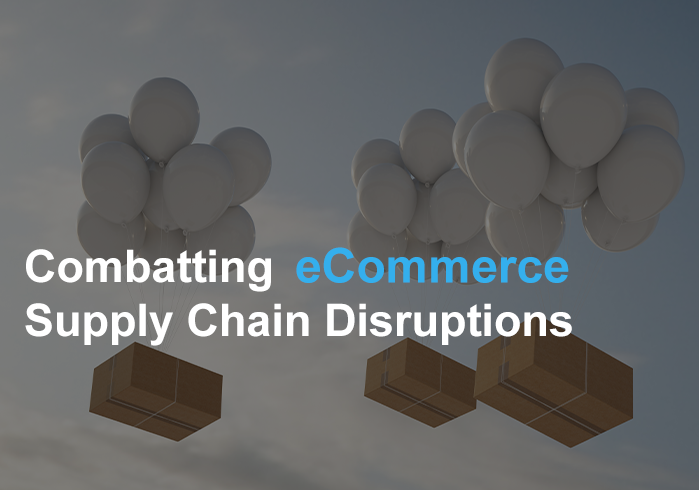
A well-functioning supply chain saves time, money, and reputation. However, if anything goes wrong, you may lose your reputation as well as a large number of customers. Both the customer and the supplier benefit from online ordering. However, greater judgment and organization is required to deliver goods on time and in good condition. This is the crux of the supply chain.
Customers expect delivery in a timely manner, often as soon as 48 hours. Uncertainties such as natural disasters, global disruptions, pandemics, and failures along the route may, however, hinder companies from meeting their goals. Even insurance firms have a “force majeure” clause in their policies to protect themselves from such occurrences. The supply chain is made up of interconnected elements, and a failure in one area can have far-reaching implications.
What is supply chain disruption?
When any company, person, or activity fails to operate as planned, the network is unable to transport merchandise from the manufacturer to the end customer, this is known as a disruption. It refers to a network shift that occurs suddenly or unexpectedly and is damaging to the overall goal of delivering products on time and in excellent condition.
The supply chain can be thought of as a pyramid, with the original equipment manufacturer (OEM) at the top. The suppliers, who are the final stage before OEM, make up the first tier. Distributors can also be accommodated at this level. The suppliers who produce and supply parts to the first-tier suppliers make up the second tier. Typically, these are small firms that are still vital to the chain despite their size. Before the output from tier 2 is accepted in tier 1, a series of quality and performance standards must be established. The network’s base is the third tier, which provides raw materials for tier 2 suppliers to prepare specific items.
Nonetheless, depending on the product and the parties, different supply network formulas exist. The degree of dependency is a significant determinant of efficiency and effectiveness. Exponential and multiplier effects mean that the efficacy of the entire supply chain is always dependent on the efficacy of all its parts.
The six typologies of disruption in the supply chain
It is important to recognize the diversity and complexity of supply chains. A disruption, on the other hand, is described in terms of its probability and severity. In existing literature, six typologies have developed, including:
- Pandemics: As demonstrated by COVID-19, pandemics have an impact on staffing levels and route efficiency.
- Natural disasters: Events such as Tsunamis and storms disrupt routines and structures.
- Transportation delays: A bad or failing transportation system is disastrous for the supply chain.
- Product problems: Low-quality products imply returns and complaints that delay everything.
- Price fluctuations: If prices are volatile, supply chain parties will be unable to prepare effectively.
- Cyber-attacks: Technology is integral to supply chain management, and attacks disrupt its function, hence the knock-on effects on the entire supply chain.
How do you prepare for possible supply chain disruptions?
Rather than being reactive, it is always preferable to take the initiative. Seven key strategies will be important:
- Develop and implement contingency and emergency plans for disruptions
- Ensure you have sufficient inventory to meet customer demands
- Conduct regular supply chain audits for vulnerabilities
- Create a network of backup suppliers
- Ensure that your supply base is well-diversified
- Harness partnerships with experienced logistics experts
- Incorporate risk assessment tools into your planning
How do you respond during and after a supply chain disruption?
Supply networks fail from time to time, regardless of preparation, resources, expertise, or experience. To minimize the damage, you should perform the following actions as soon as possible:
- Maintain open lines of communication with your customers and ensure that they receive the appropriate information at the appropriate time.
- Do not try to mask the problem or its significance to the supply chain.
- Evaluate your supply chain’s most crucial components and focus your priority initiatives there.
- Curate and match your inventory so that you have a clear understanding of your capacity and limitations.
- To aid in decision-making and crisis management, research customer and buyer behavior.
- Optimize the production and distribution company to give you a safety net.
- Identify, utilize, and leverage any logistical flexibilities that are under your control, e.g., alternative supply routes.
- Ensure that you have a good cash flow plan so that you do not run out of money to run the business.
How do you minimize the risk of supply chain disruptions?
There are five ways in which you can reduce the probability and severity of supply chain disruptions:
- Use historical and current data, as well as high-quality projections, to predict which locations are likely to be problematic.
- Increase your visibility so that clients and partners are confident in your supply chain presence.
- Share information since it allows support to come through and assists your sector colleagues.
- Increase capacity to the point where it outperforms your most pessimistic projections regarding the impact of a disruption.
- Plan ahead of time so that any disruptions do not influence important components of your supply chain, and you can deliver finished goods even in a crisis.
Additionally, you should assess each risk and implement the response or contingency plan at the earliest opportunity. Nothing is more frustrating than devising a risk-reduction strategy and then failing to carry it out in an emergency. Make sure that all of your employees are aware of the risks and the responses that are expected of them in the event that one emerges. Above all, operate in collaboration with other industry participants. There’s a propensity to go it alone in a crisis. This is, however, the wrong strategy because it produces silos that don’t communicate with one another. The most cooperative and collaborative industries are the ones that withstand supply chain upheavals, as history has shown.
Wrapping up
Any event that inhibits the timely, orderly, and professional delivery of merchandise from the supplier to the client is referred to as a supply chain disruption. People, events, structures, infrastructure, and institutions can all fail, resulting in these problems. Despite all of the preparation and resources available, some events catch businesses off guard. The ability to plan, retain visibility, build capacity, and foster connections with partners is critical to surviving and thriving in these circumstances. When dealing with issues, you must remain adaptable.


